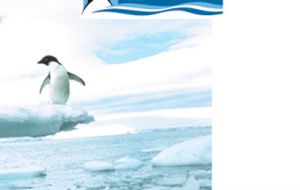MercoPress. South Atlantic News Agency
Twelve million penguins in Antarctica, according to the 2017 SOAP report
 SOAP report collected data from 660 or more sites across the Antarctic continent and draws on current scientific data, including 3,176 records from 101 sources
SOAP report collected data from 660 or more sites across the Antarctic continent and draws on current scientific data, including 3,176 records from 101 sources April 25 is World Penguin Day, timed to coincide with the annual northward march to the sea of Antarctic penguins, as autumn edges toward winter in that part of the world. There are 12 million penguins in Antarctica, according to a new report – the inaugural State Of Antarctic Penguins 2017 (SOAP) report – also released on Tuesday.
The non-profit organization Oceanites (“ocean-eye-tees”), which released the report, says it is the most comprehensive survey of Antarctic penguins yet. The report includes all five penguin species found in Antarctica (emperor, Adélie, chinstrap, gentoo and macaroni) and indicates that Adélie and chinstrap penguins have declined significantly in recent years, where warming has occurred on the Antarctic Peninsula.
The 12-million-penguins number is calculated, of course. No one actually counted them all. But the report does aggregate data from 660 or more sites across the Antarctic continent and draws on current scientific data, including 3,176 records from 101 sources of on-the-ground colony counts and satellite photo analyses.
Key findings of the report include the fact that – over the past 60+ years in the Antarctic Peninsula, where warming has occurred – one penguin species has increased while two have declined significantly. The gentoo penguin populations have increased. Adélie penguin populations have, in general, declined significantly, and chinstrap penguin populations have declined – at some locations significantly.
By contrast, in East Antarctica and the Ross Sea, regions that have not experienced a warming trend, Adélie penguin populations appear to be increasing.
Associate professor Heather Lynch, whose Lynch Lab for Quantitative Ecology at Stony Brook University provides scientific expertise for the report, said:
“We can now use advanced satellite technology and data analyses to better understand how these penguin populations are changing. By integrating expert biological field surveys, satellite imagery analyses, and citizen science, we can further enhance our ability to understand the changes taking place in an incredibly important world we are just learning about”.




Top Comments
Disclaimer & comment rulesCommenting for this story is now closed.
If you have a Facebook account, become a fan and comment on our Facebook Page!